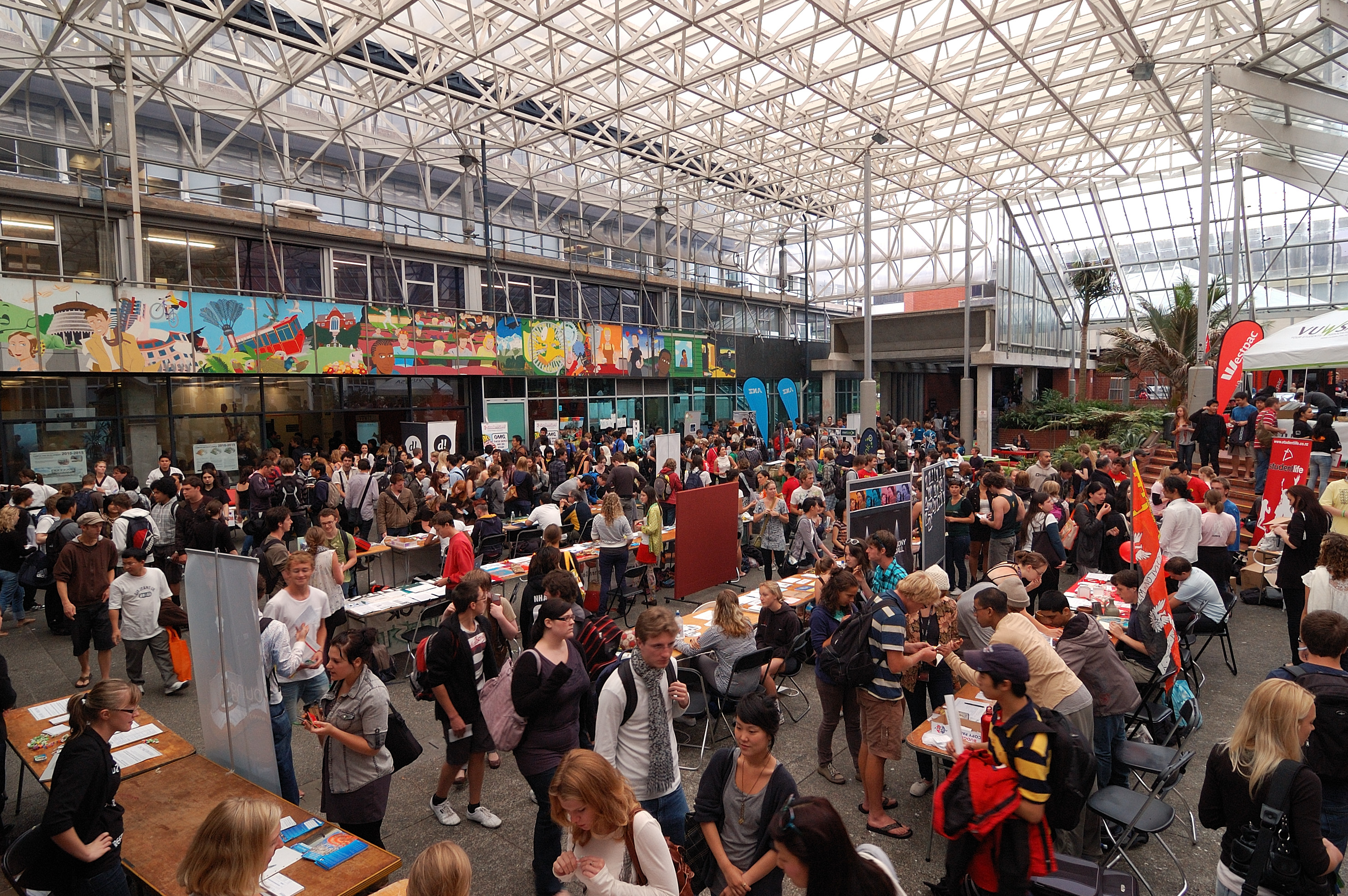
The current story of the Gordon Wilson Flats is perhaps not too different from that of the Hunter Building in the 1970s and 80s, though, of course, the battle to save the Gordon Wilson Flats is just at its beginning.
The two issues prompting the call for demolition though are the same: anxiety about earthquake risk, and the university’s plans for future expansion. The two buildings also share the university’s opposition for their heritage protection, through listing on the District Plan.
In the 1970s two moderate earthquakes on the 26th March 1973 visibly damaged the Hunter building at VUW (Victoria University of Wellington). By August the WCC (Wellington City Council) had declared the Hunter building an earthquake risk, requiring demolition or strengthening. Another pressure for the Hunter Building was the university’s shortage of accommodation – something not at stake with the Gordon Wilson Flats.

The battle over the Hunter Building occurred during the period when the university celebrated its 75th anniversary, though Barrowman states that this anniversary wasn’t really observed, noting that the context, including potentially changing its name to “University of Wellington,” might have caused “unfortunate debate,” given that “the university was facing criticism for squandering its own and the city’s heritage” (p. 144).

The following year VUW successfully opposed the WCC’s attempt to list the Hunter Building in the District Scheme, and the then mayor, architect Michael Fowler, apparently described the university as a “bloody pack of rascals.” This insult apparently reflected Fowler’s opinion that VUW’s consultants had inflated the cost of saving the building. In his view, VUW was “abrogating its responsibility” for not saving the building.

By September 1977, the VUW Council decided to demolish the Hunter Building. The decision resulted in the forming of Friends of Hunter (by Leone Harkness and Jim McMillan) and a 2000 signature petition. The building’s merits continued to be contested.
Helen Tippett, professor of architecture, described the building as a bad example of Gothic Revival.
The Evening Post recorded an opinon of the building as being:
“one of the few remaining examples of late perpendicular Gothic and Kiwi do-it-yourself, and certainly the only interesting piece of architecture on campus.”
… while, one graduate argued that the building symbolised the university’s past, before it became “caught up in the money-making swirl of the real world.”

While the Friends of Hunter undertook a feasibility study of the building’s restoration, the university agreed to suspend plans for the building’s demolition. They put forward a proposal to retrofit the building, saving the east facade, library wing and central staircase. Disagreement still remained regarding the estimated cost, but agreement was reached to hold a design competition by the end of 1979.

During this time the Physics and Music departments remained in the building. Barrowman reports that “Plaster fell from the ceiling and peeled from the walls; the roof leaked” (p. 146). She also quotes the Chair of the Music Department, Margaret Nielsen, describing the building as “dirty, dangerous, vermin-ridden, [and] water-damaged,” and asserting (regarding the musicians in the city), that the department could “hardly invite them into this grot” (p. 146).
In February 1979 the Wellington Regional Committee of NZHPT published a booklet titled Hunter, with contributions by Julia Buchanan (a full history), F L W Wood (a nice reminiscence from a respected academic who had worked in the building), and Grahame Anderson. This was a significant contribution to the debate, and gave impetus to the design competition and the classification by NZHPT.
It wasn’t until 1982 that the Historic Places Trust classified the Hunter Building, but when it did, the building was given a category B. It now has Category 1 status. Following this the WCC added the building to its District Scheme heritage list. According to Barrowman, “The university Council opposed both these moves” (p. 147).

Victoria was amidst huge changes to the campus, with contention regarding the other projects and their impacts, including the “Von Zedlitz rockets” (50 ft ventilation chimneys), which blocked the view of the then PM (Rob Muldoon) from Central Terrace.
Early in 1980, the Treasury withheld approval for Victoria’s building programme until a number of conditons had been met, including a decision regarding the fate of the Hunter Building. The delay was not well received, with the Vice-Chancellor using words like “outrageous.”

The future of the Hunter Building was still not secure by the end of 1982, but the increasing shift of the university’s centre southward focussed future development away from the area of the Hunter Building. The Athfield-designed plastic roof over the Rankine Brown courtyard (completed 1986) was an important part of this.

By May 1984, the government, VUW, the Friends of Hunter, and the Historic Places Trust publicly announced their agreement regarding what parts of the Hunter Building would be saved. An limited “Hunter ideas” competition was run, with Grahame Anderson and Gordon Moller being given the commission. The projected cost of the project was $20m ($62m today).

The Labour government’s move from the University Grants Committee to a bulk funding model for universities made finding funds difficult. Things seem to have been at a standstill. The use of the building as a set for the television series Ray Bradbury Theatre (starring Ian Mune and Patrick MacNee) appears to have been a high point.
It wasn’t until December 1990 that the tender was let for $12m ($20m today). The strengthened and upgraded building opened in May 1993. The building is now considered to be a vital part of the university, housing most of its senior managers. It is a landmark and emblem of the university seen from many parts of the city.

References
Barrowman, Rachel University of Wellington 1899-1999: A History (Wellington: Victoria University Press, 1999)
Hunt, Jeff “Hunter Building, University of Wellington” (31 October 2013) New Zealand Humanists
“The Hunter Building” Victoria University of Wellington
“Happy Birthday Hunter” Victorious (Spring 2004) p. 21.


Leave a Reply